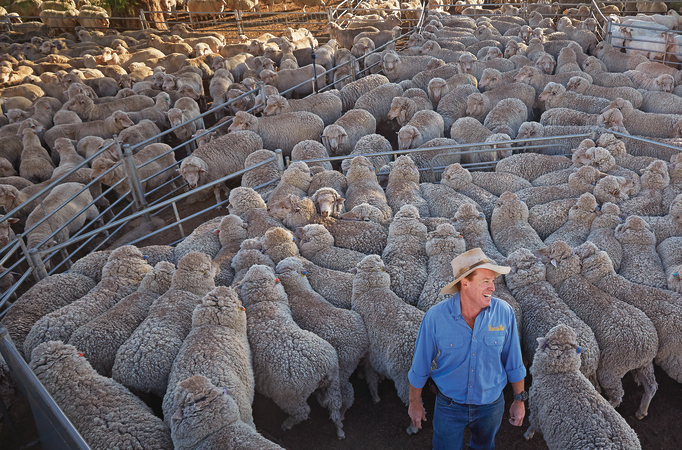Wool competitiveness to increase against substitutes
Wool competitiveness to increase against substitutes
In relative price terms, wool is the most competitive it has been against cotton since 2011. The price of wool has also retreated to a 3-year low against polyester at a time when oil and polyester prices have been historically low due to COVID-19 containment measures. A low relative price could lead to increased purchasing and incorporation of wool into textile blends in the second half of 2020–21.
Relative prices of wool, cotton and polyester, September 2013 to October 2020

Note: ‘Wool’ refers to the 21-micron average; ‘Cotton’ refers to the Cotlook ‘A’ index: ‘Polyester’ refers to China domestic polyester 1.4 denier. All prices originally in US cents per kilogram. Sources: ABARES; AWEX; Cotlook; Fibre2Fashion
Wool production steady in 2020–21
Australian shorn wool production is forecast to remain steady in 2020–21 at 282,000 tonnes, after falling by 5.5% in 2019–20. Low sheep numbers carrying over into 2020–21 are expected to further reduce the number of sheep shorn nationally by 5% to 65 million. Average wool cut per head is forecast to rise by 4.9% due to improved seasonal conditions in most wool-growing regions.
Prolonged dry seasonal conditions across most wool-growing regions and strong demand for sheep meat (relative to lower demand for wool) caused a reduction in the number of sheep shorn from 79.8 million in 2017–18 to 68.4 million in 2019–20. Recovery in the number of sheep shorn will rely on flock rebuilding.
Average wool micron and fibre quality are expected to rise slightly in 2020–21 due to improved seasonal conditions. January to October wool testing volumes in 21- to 22-micron wool are up year-on-year, after declining throughout 2018 and 2019 due to the drought shifting the average micron lower. Superfine wool testing volumes rose during the drought but have declined significantly in 2020, with wool 17.5 microns and finer down by 19% on average.
Change in wool testing volume, by micron, Australia, January to October 2020
Note: Percentage change in volumes tested by Australian Wool Testing Authority compared with January to October 2019. Source: Australian Wool Testing Authority
Superfine wool price premiums to be restored
Despite lower prices across the micron profile, premiums for superfine wool are expected to strengthen in 2020–21. Superfine wool is a niche product in world textile markets, meaning that price levels and premiums are highly sensitive to small changes in supply and demand. Improved seasonal conditions across most wool-growing regions are expected to lead to lower superfine wool production and improve wool fibre quality across the micron profile. Improved fibre quality and lower supply are expected to support superfine wool premiums over 2021.
Relative premiums for various wool microns compared with 21-micron wool, January 2017 to October 2020

Note: ‘Relative premium’ is calculated as the micron premium or discount on 21-micron wool, in percentage terms. Sources: ABARES; AWEX
Source: Sources: ABARES


